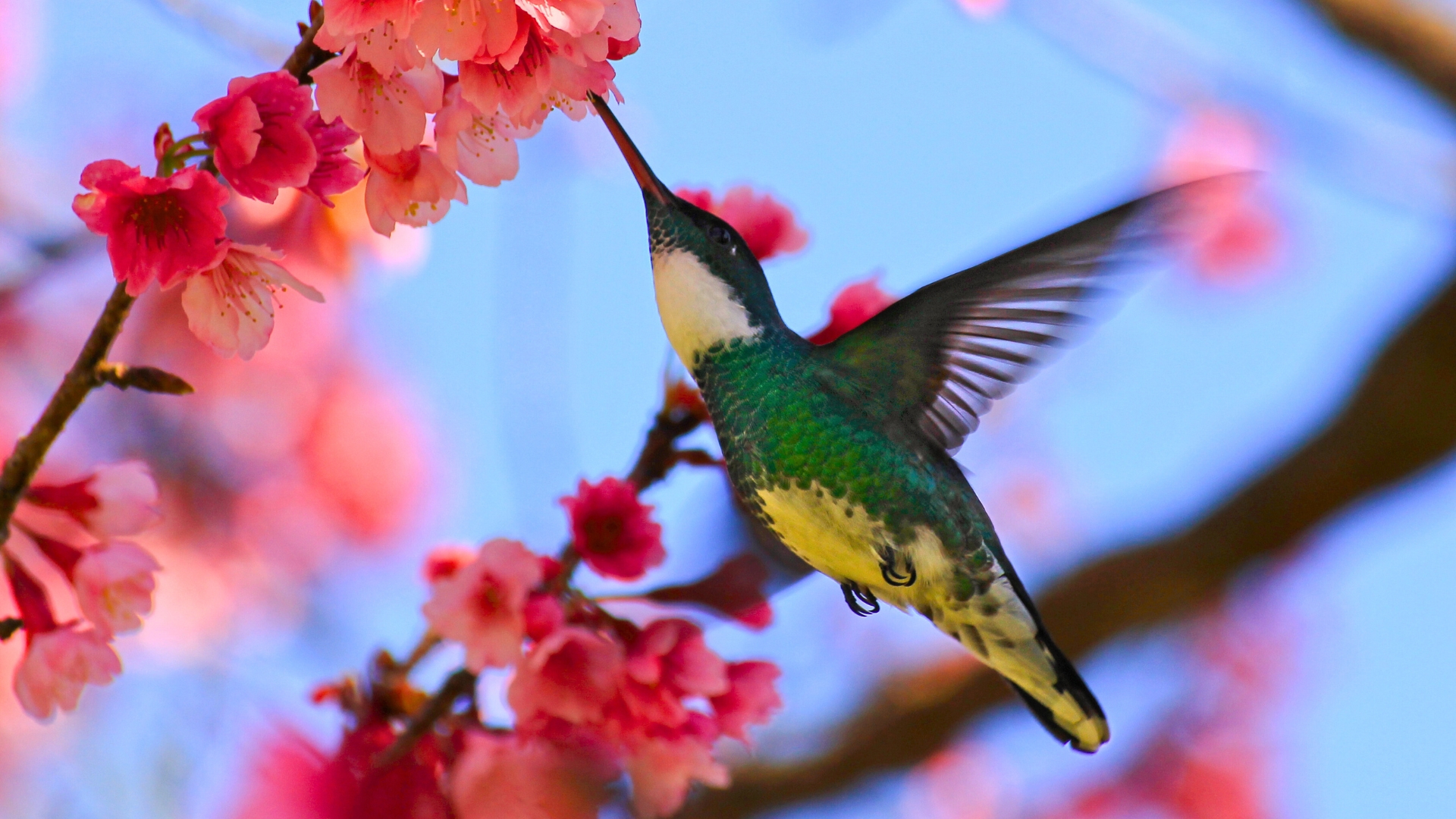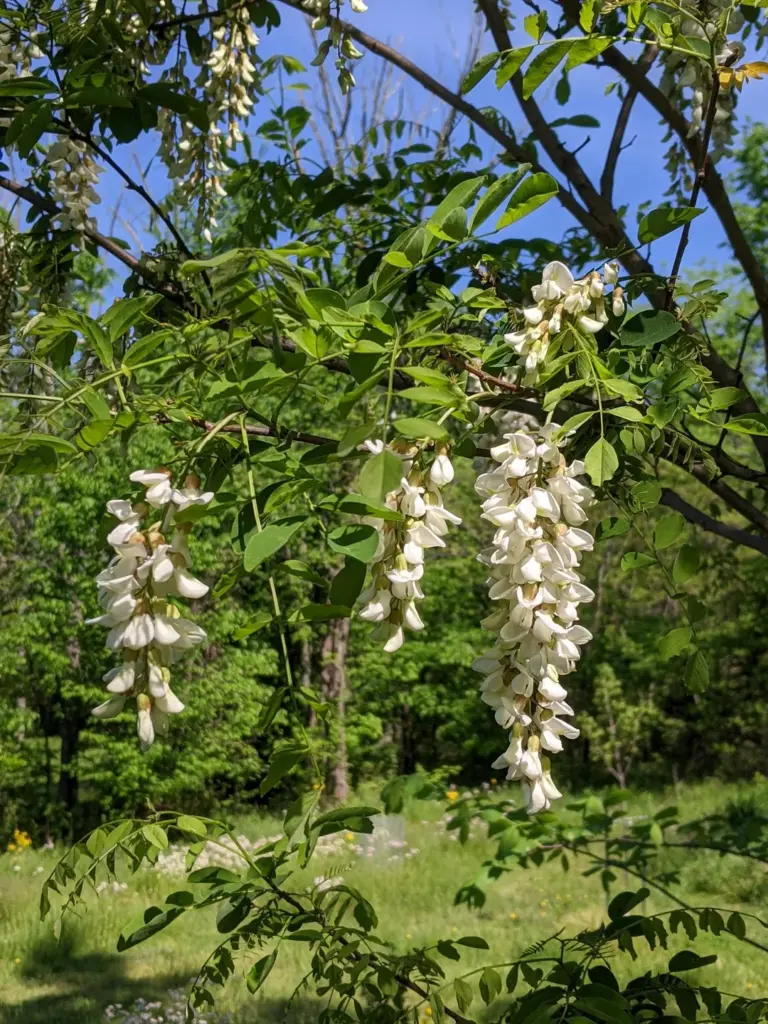16 Trees That May Help Turn Your Yard Into A Hummingbird Haven
Certain trees do more than provide shade—they can turn a yard into a hummingbird paradise. I’ve noticed that some species naturally attract these tiny, colorful visitors.
Their flowers, berries, or even the shape of their branches make a big difference. Watching hummingbirds flit from tree to tree is endlessly entertaining. These 16 trees have added both beauty and a lively buzz to my own garden.
1. Trumpet Tree (Catalpa)
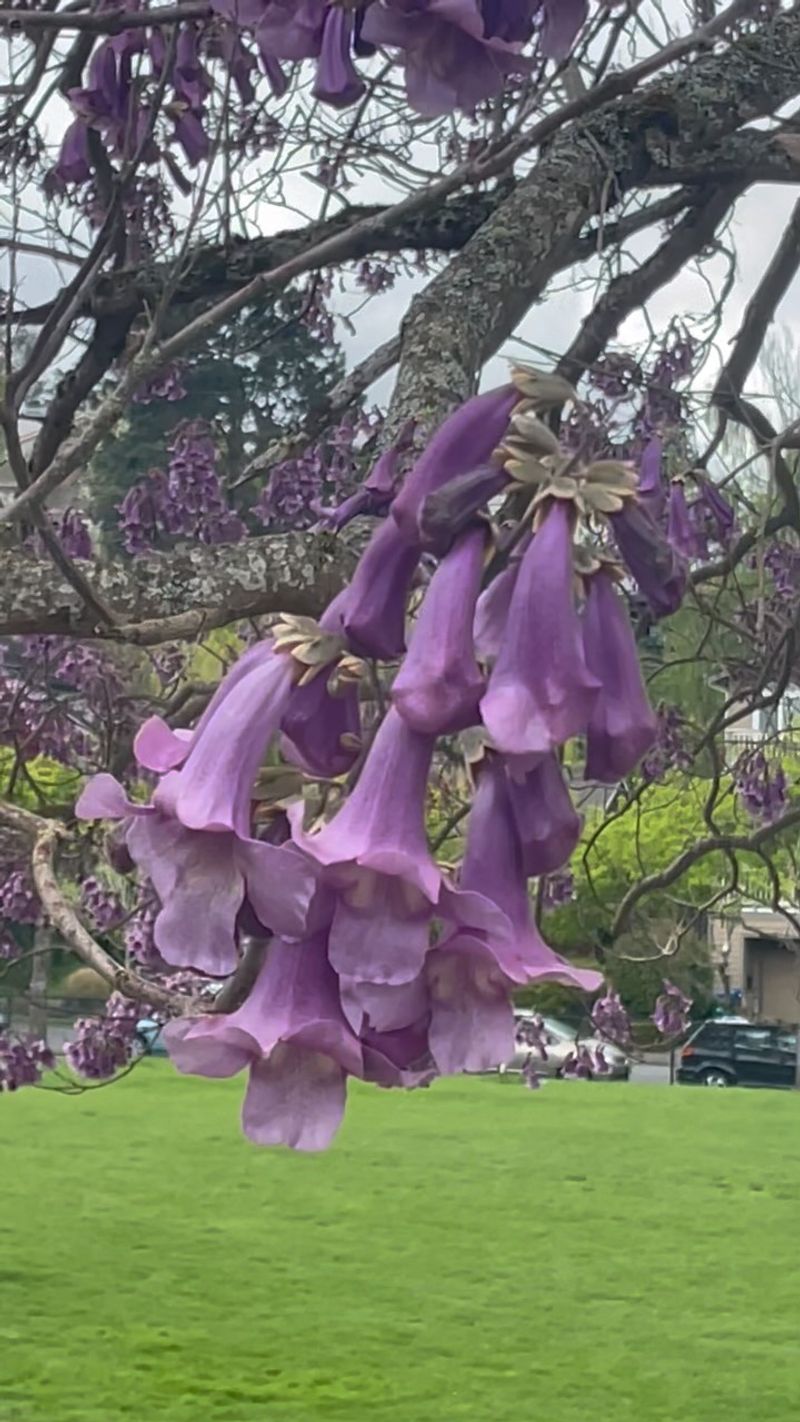
Nothing says ‘welcome home’ to hummingbirds quite like the dramatic trumpet-shaped flowers of the Catalpa. These hardy trees produce clusters of white blooms adorned with purple and yellow speckles that act like neon signs for hungry hummers.
Spring brings an explosion of these nectar-filled flowers, creating a buffet that hummingbirds simply can’t resist. Catalpas grow quickly and provide ample shade, making them perfect multi-purpose additions to larger yards.
2. Red Buckeye
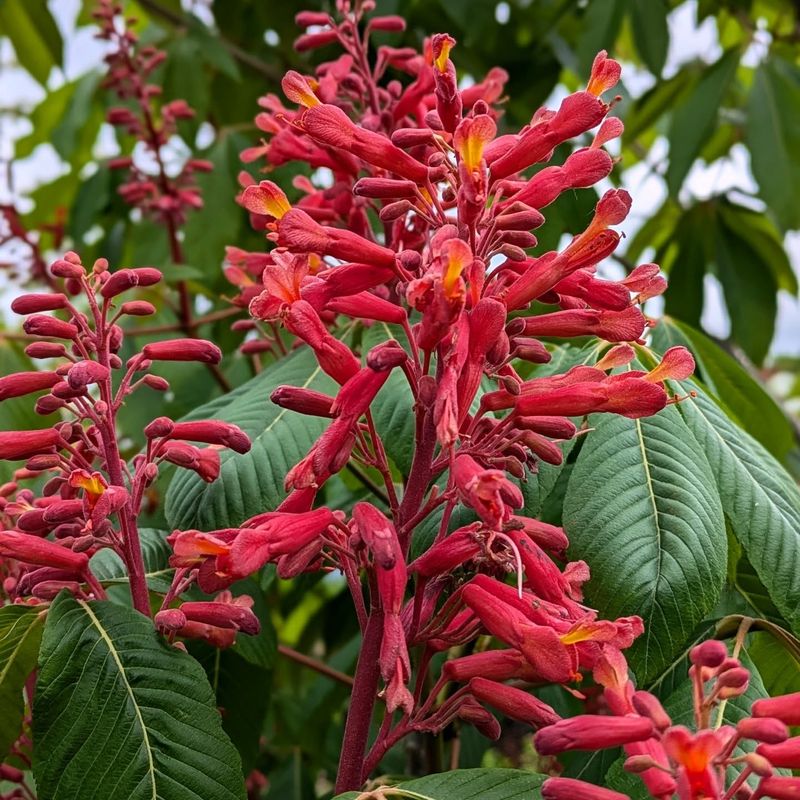
Early spring migrants find salvation in the Red Buckeye’s brilliant scarlet flower spikes. Standing out against fresh green foliage, these tubular blooms appear when many other nectar sources haven’t yet awakened from winter slumber.
Hummingbirds remember reliable food sources and return year after year to these trees. Native to the southeastern United States, Red Buckeyes stay relatively small at 15-20 feet, making them perfect for modest gardens or as understory trees in woodland settings.
3. Eastern Redbud
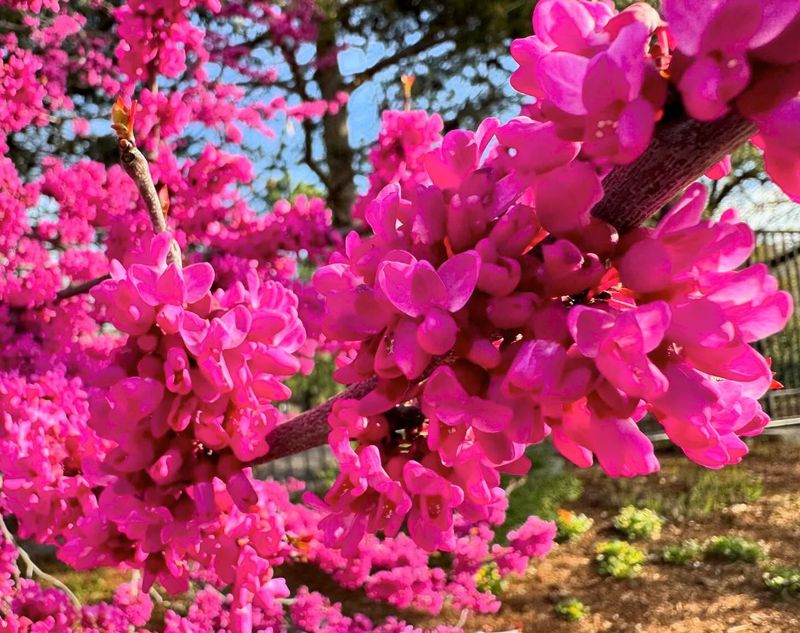
Magenta flowers erupt directly from the bark in early spring, creating a spectacular display before leaves even appear. This unique flowering habit, called cauliflory, makes the Eastern Redbud a standout choice that transforms your yard into a pink cloud that hummingbirds can spot from far away.
Heart-shaped leaves follow the flowers, adding charm throughout summer. These adaptable native trees thrive in partial shade to full sun and tolerate a variety of soil conditions, making them foolproof choices for nearly any yard.
4. Tulip Poplar
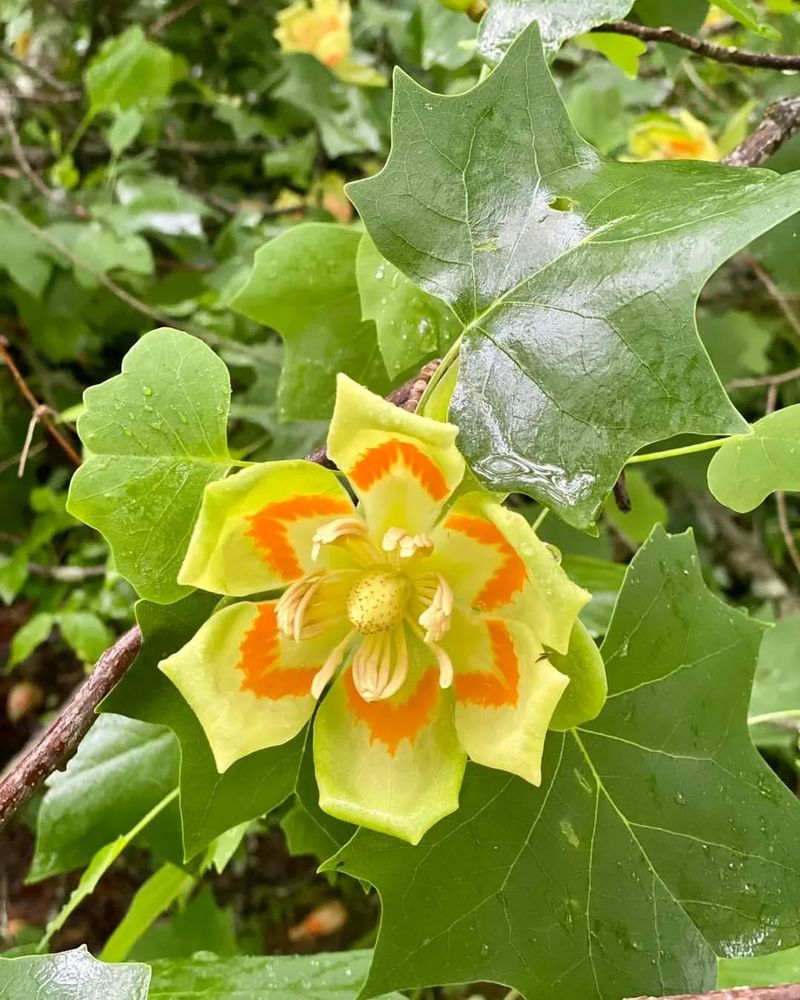
Reaching majestic heights, the Tulip Poplar produces unusual orange and yellow-green flowers resembling tulips high in the canopy. These nectar-rich blooms might go unnoticed by humans but never escape the keen eyes of hummingbirds, who will zoom to the treetops for this sweet reward.
Fast-growing and long-lived, these native giants provide decades of beauty and bird habitat. Their straight trunks and distinctive four-lobed leaves create attractive vertical elements that frame properties beautifully while supporting local wildlife.
5. Desert Willow
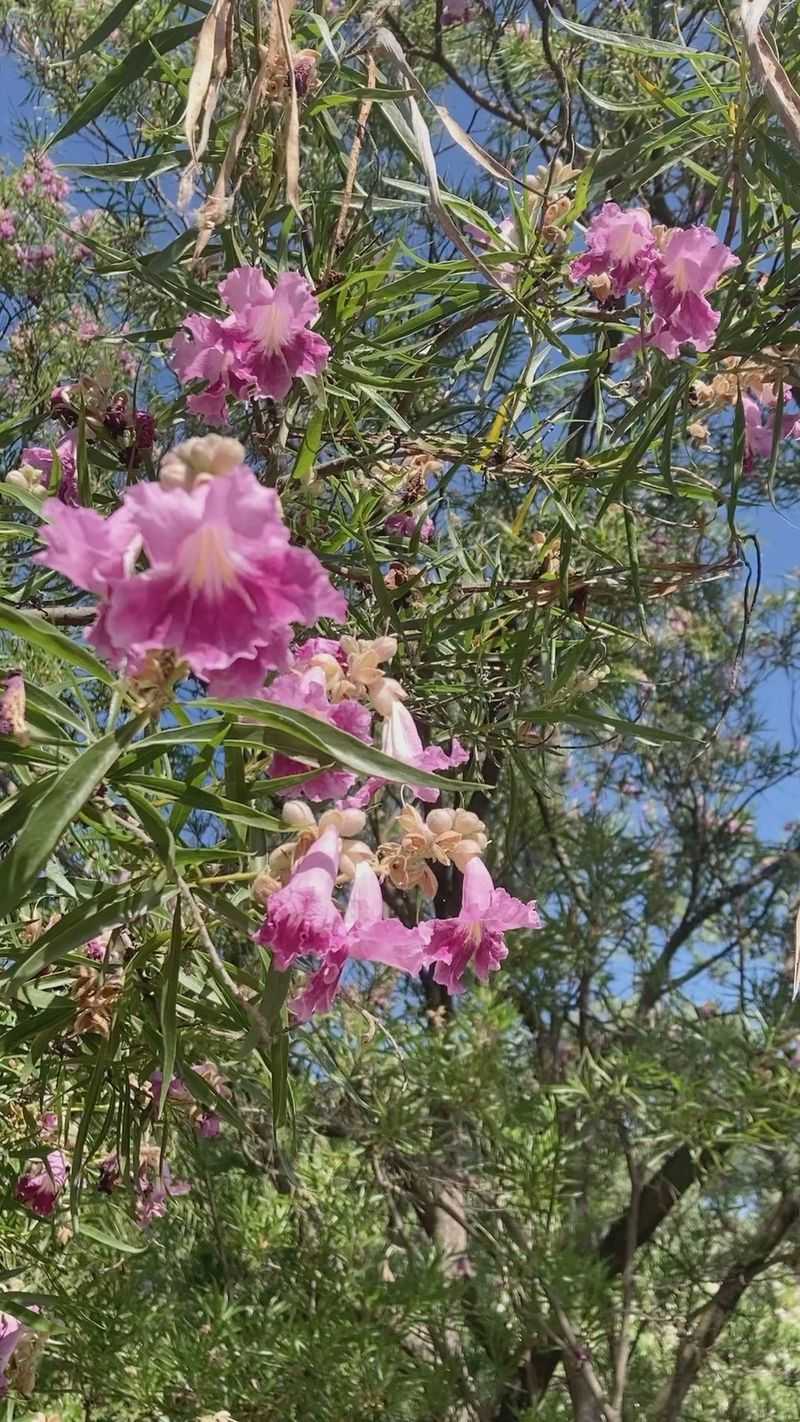
Perfectly adapted to arid climates, the Desert Willow brings hummingbird paradise to dry regions where nectar sources are precious. Orchid-like flowers in shades of pink, lavender, and white appear throughout the hot months when many plants have stopped blooming.
Drought tolerance makes this small tree a water-wise choice for southwestern gardens. Its graceful, willow-like foliage dances in the slightest breeze, creating a cooling visual effect that complements its role as a vital nectar source during scorching summer days.
6. Mimosa (Silk Tree)
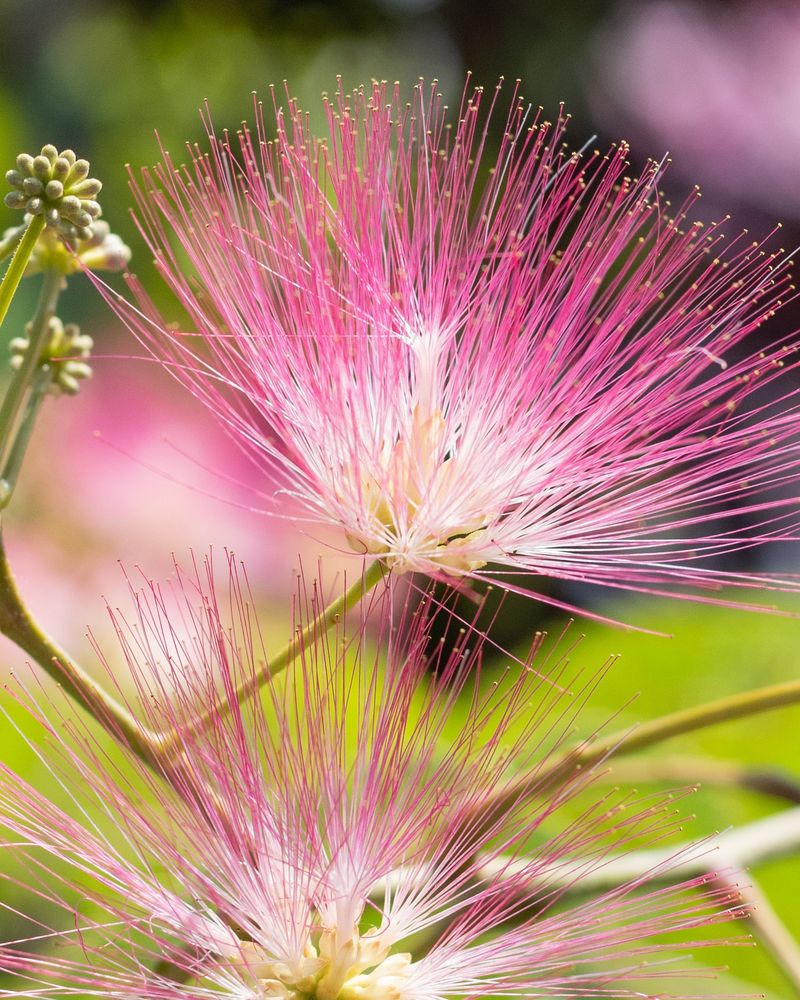
Feathery pink puffballs dance atop delicate fern-like foliage in summer, creating a tropical feel even in temperate gardens. Hummingbirds weave between these fluffy blooms, taking advantage of their rich nectar while enjoying the dappled shade beneath.
Evening brings a sweet fragrance that perfumes the entire garden. Though considered invasive in some regions, properly managed Mimosas create magical spaces where hummingbirds and people can enjoy the unique texture and color these conversation-piece trees bring to the landscape.
7. Bottlebrush Tree
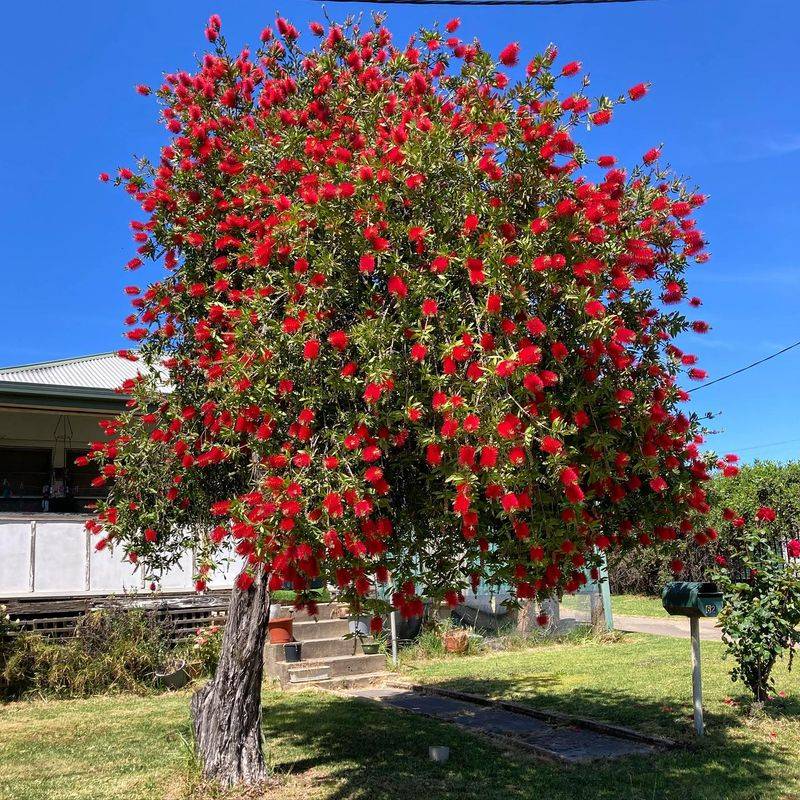
Vibrant red cylindrical flower clusters resembling their namesake cleaning tools make Bottlebrush trees irresistible to hummingbirds. The unusual stamens loaded with nectar create perfect feeding stations for these tiny birds, who can’t resist the brilliant color signal.
Evergreen leaves provide year-round structure in the landscape. Perfect for warm-climate gardens in USDA zones 9-11, these Australian natives bring exotic flair while creating reliable hummingbird habitat that buzzes with activity during the extended blooming season.
8. Golden Rain Tree
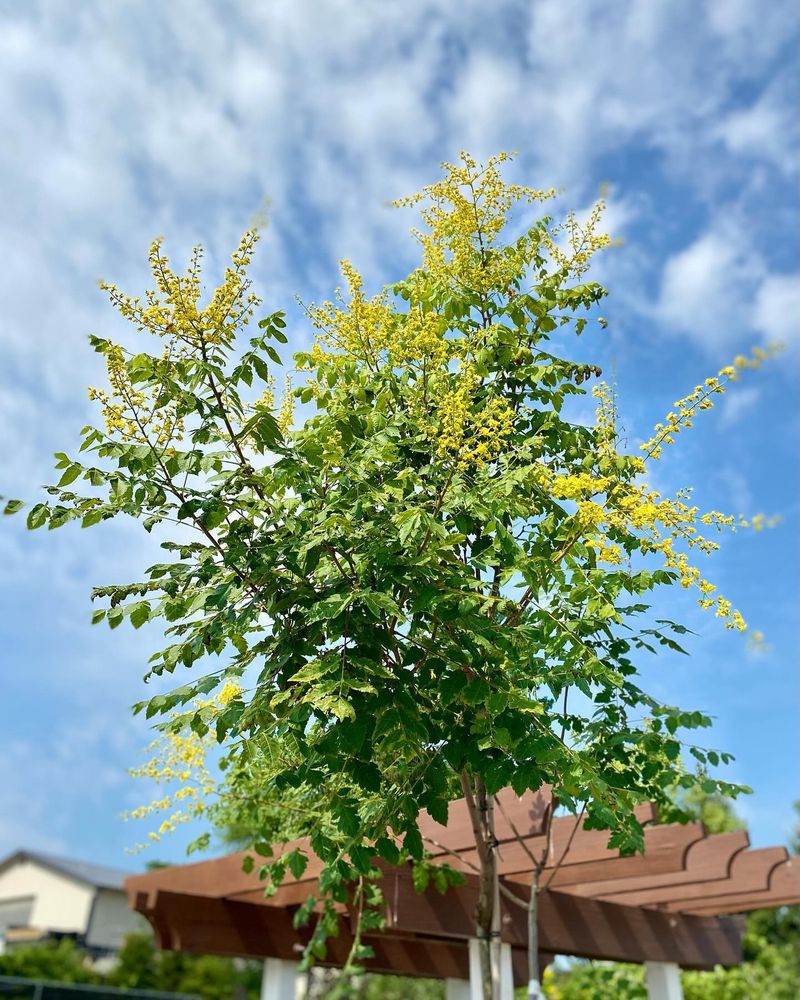
Summer brings cascades of yellow flowers that transform into fascinating papery lantern-like seed pods by fall. Hummingbirds appreciate the long-lasting blooms during the hottest months when many spring flowers have faded, making this tree a valuable mid-season nectar source.
Drought tolerance once established makes this Asian native surprisingly easy to grow. The combination of stunning flowers, unique seed pods, and brilliant yellow fall foliage creates multi-season interest that keeps both gardeners and hummingbirds coming back for more.
9. Crape Myrtle
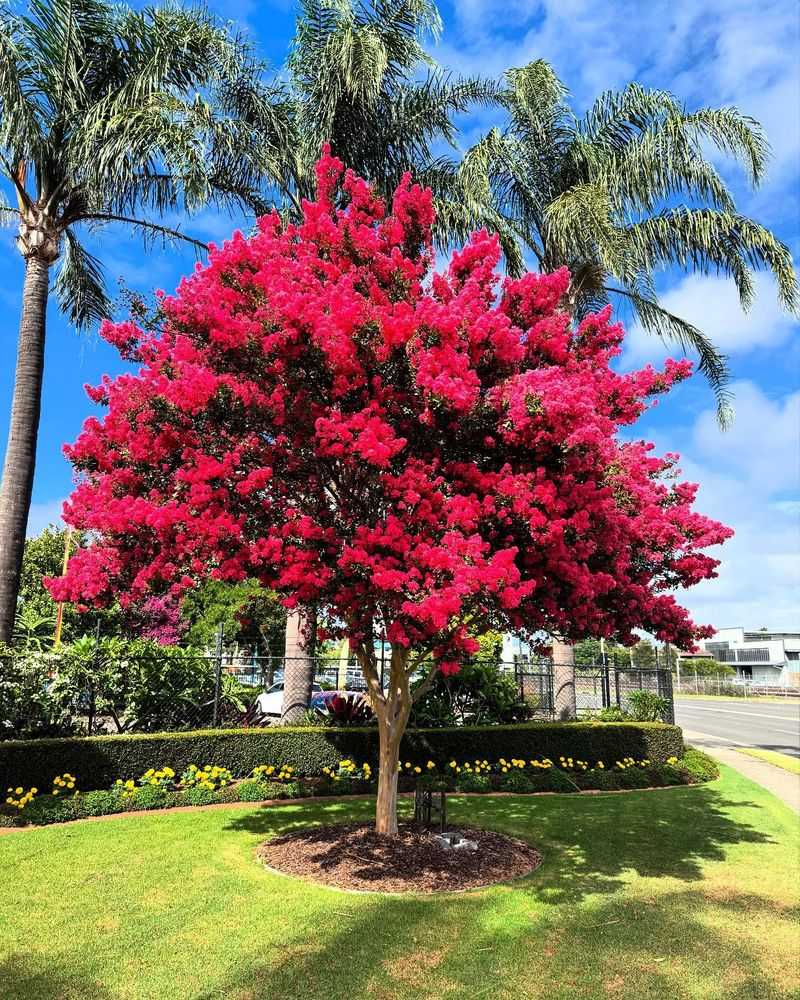
Summer heat brings forth crinkled paper-like flowers in shades ranging from white to deep purple on these southern favorites. Long blooming seasons extend from early summer through fall, providing reliable nectar sources when many spring-flowering trees have finished their show.
Exfoliating bark reveals cinnamon-colored inner layers for winter interest. Available in sizes from dwarf varieties to small trees reaching 30 feet, Crape Myrtles fit almost any landscape while providing crucial summer sustenance for resident and migrating hummingbirds alike.
10. Pawpaw Tree
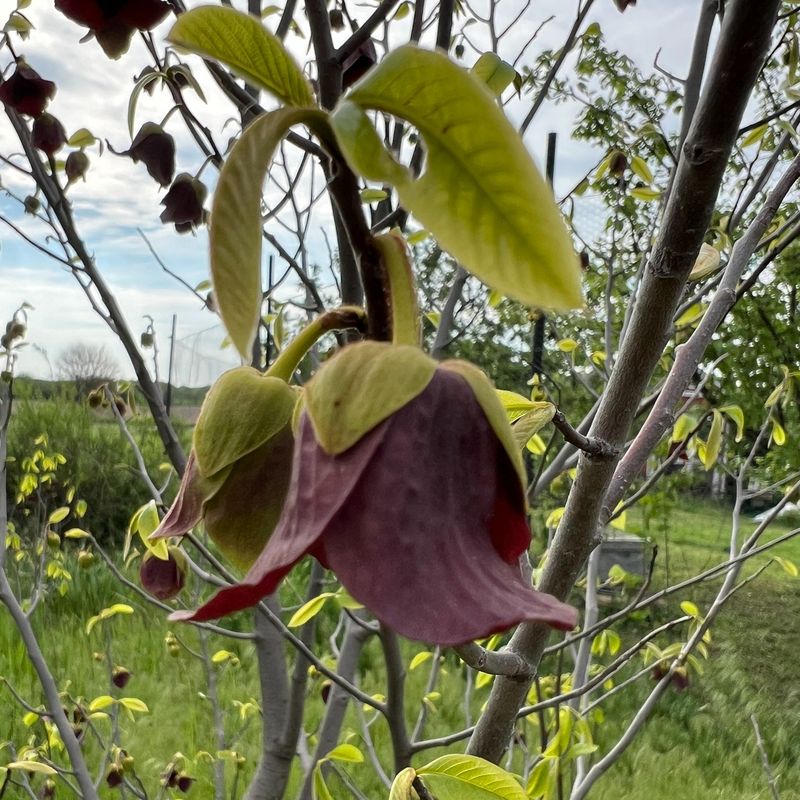
Unusual burgundy flowers appear in early spring before the tropical-looking leaves unfurl. Though not as showy as some trees, these subtle blooms attract early-season hummingbirds with their rich nectar and distinctive color that stands out against the bare branches.
Fall brings bonus rewards of custard-like fruits that humans can enjoy too. Native to eastern woodlands, these understory trees thrive in partial shade and create perfect habitat layers in naturalistic gardens while supporting both hummingbirds and native pollinators.
11. Flowering Dogwood
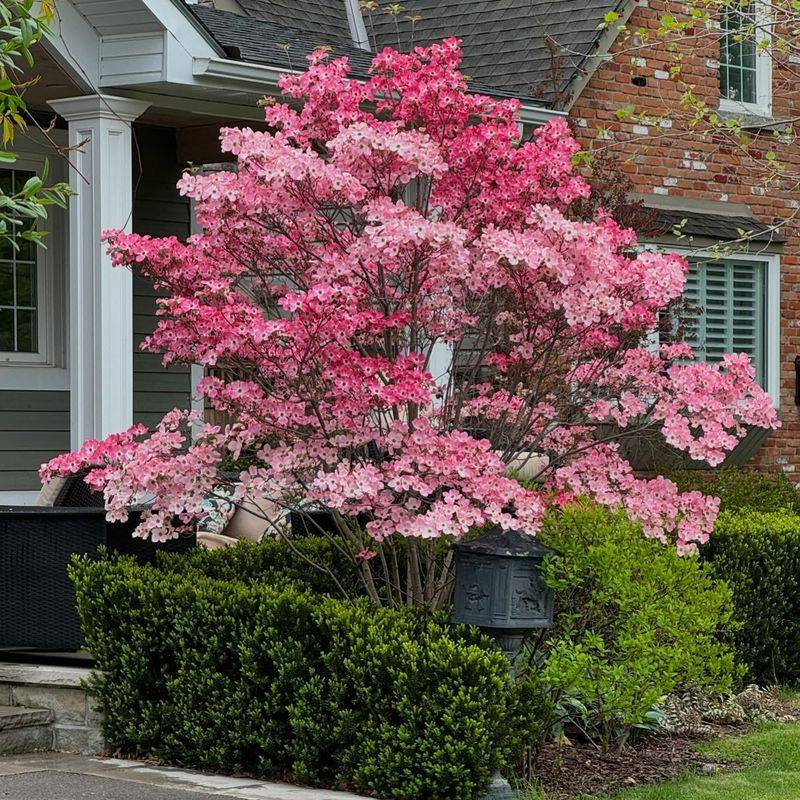
Spring transforms these native beauties into clouds of white or pink with their distinctive four-bracted flowers. Hummingbirds arrive just as these blooms open, creating perfect timing for early-season feeding before many other nectar sources become available.
Red berries follow in fall, attracting other birds while the foliage turns deep burgundy. Growing gracefully in dappled shade or morning sun, dogwoods create the perfect understory layer in woodland gardens while providing crucial early-season support for returning hummingbird populations.
12. Chinese Fringe Tree
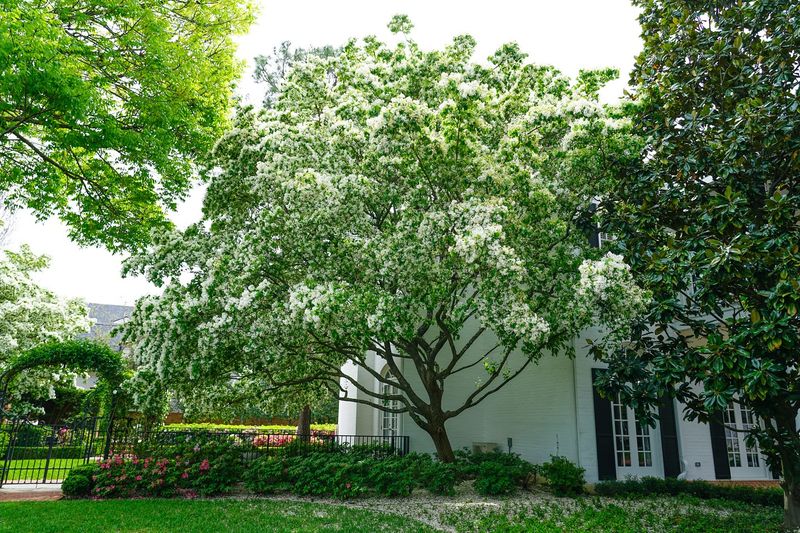
Clouds of fragrant white fringe-like flowers dangle from branches in late spring, creating a spectacular show that hummingbirds find irresistible. The unusual thread-like petals create accessible nectar sources that these tiny birds navigate with precision.
Remarkably pollution-tolerant, these trees thrive even in urban settings. Slow-growing and ultimately reaching just 15-20 feet, Chinese Fringe Trees make perfect specimens for smaller properties while creating valuable habitat for hummingbirds and other wildlife in spaces where larger trees won’t fit.
13. Vitex (Chaste Tree)
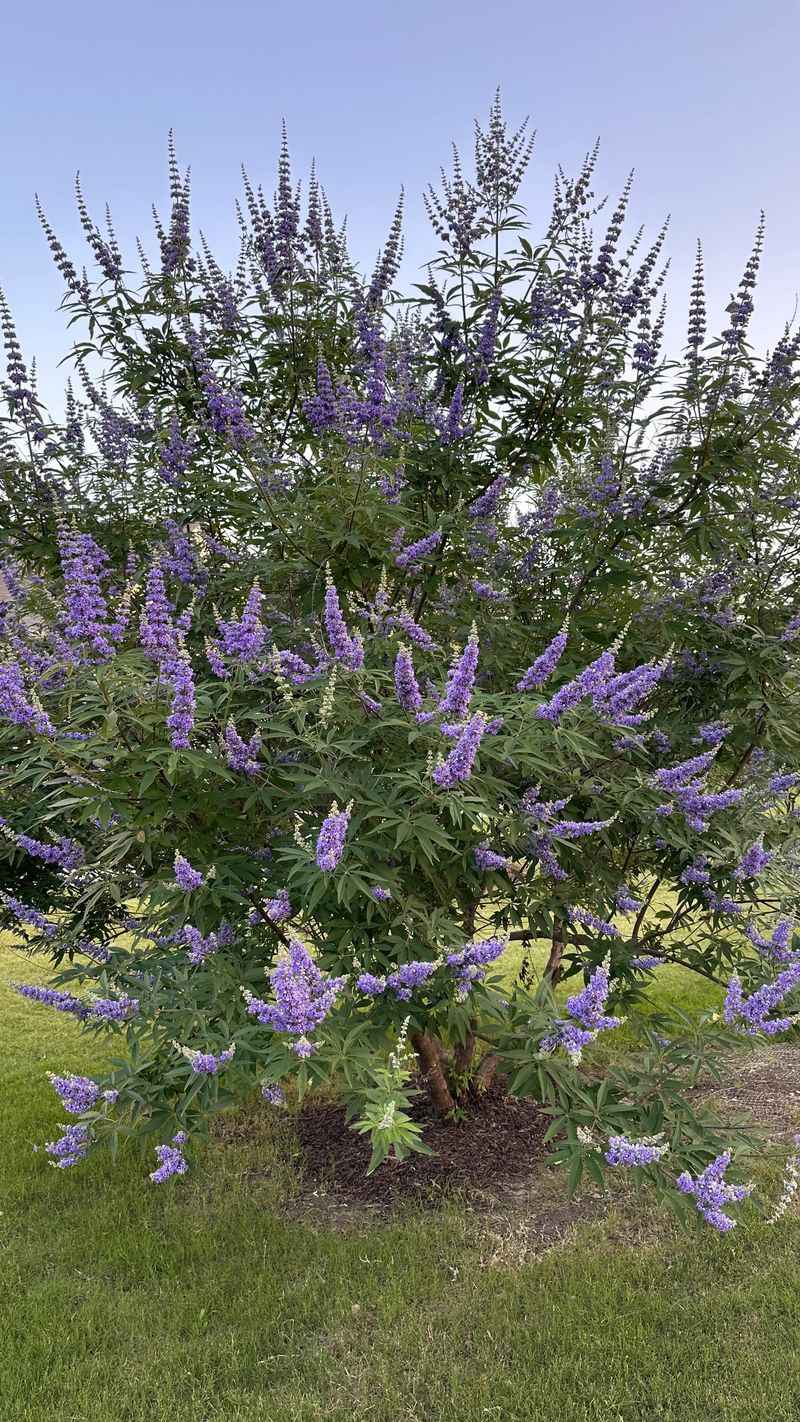
Spiky purple flower clusters reminiscent of lavender appear throughout summer, offering crucial mid-season nectar when many spring bloomers have finished. The aromatic foliage adds sensory appeal while the unusual flower form creates perfect feeding stations for hovering hummingbirds.
Drought tolerance makes this Mediterranean native perfect for water-wise gardens. Growing to about 15 feet tall and wide, Vitex creates an ideal small specimen tree that works beautifully in sunny borders while providing reliable summer food sources for hummingbirds.
14. Sourwood Tree
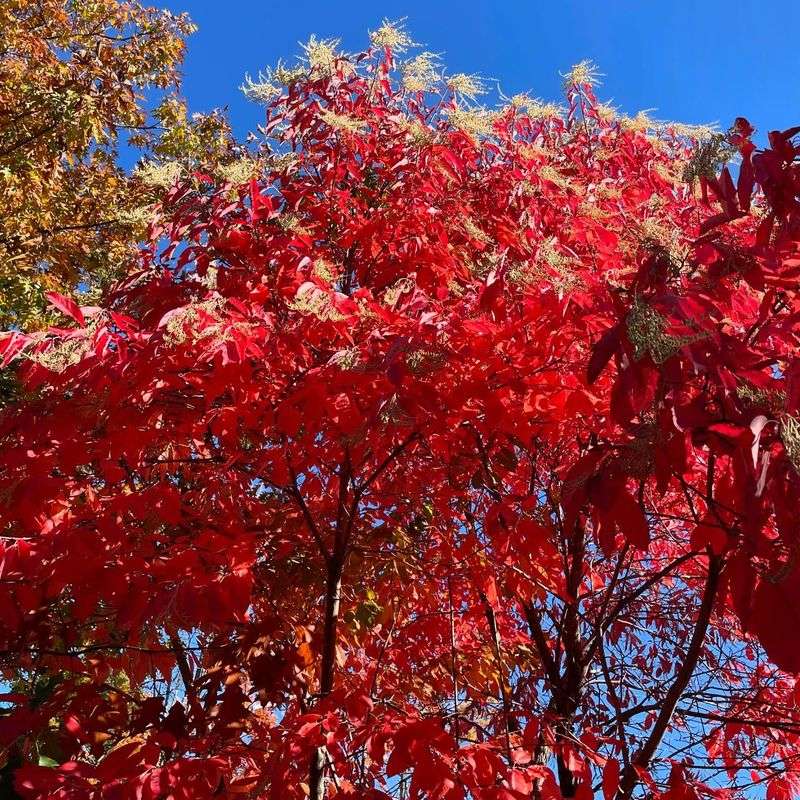
Lily-of-the-valley-like flower chains dangle from branches in mid-summer when many spring-flowering trees have finished blooming. These fragrant white blossoms provide crucial mid-season nectar that helps hummingbirds through the hottest months when food sources may become scarce.
Fall brings spectacular crimson foliage that rivals any maple. Native to eastern forests, sourwoods grow slowly to 25-30 feet, making them manageable additions to home landscapes while providing valuable summer sustenance for hungry hummingbirds.
15. Seven Son Flower Tree

Late summer brings clusters of fragrant white flowers when many other trees have finished blooming for the season. This unusual flowering time makes Seven Son Flower trees especially valuable for hummingbirds preparing for migration, offering energy-rich nectar during a critical period.
Exfoliating bark adds winter interest after blooms fade. Introduced from China but non-invasive, these small trees grow to about 15-20 feet and tolerate both sun and partial shade, making them versatile additions to gardens looking to support hummingbirds throughout the growing season.
16. Black Locust
Clusters of fragrant white pea-like flowers appear in late spring, filling the air with a sweet scent that hummingbirds find irresistible. These nectar-rich blooms attract a steady stream of visitors, especially during the peak of their flowering period.
Fast-growing and hardy, Black Locusts tolerate a variety of soil types and provide dappled shade beneath their delicate, pinnate leaves. Beyond feeding hummingbirds, their fragrant flowers also draw bees and butterflies, creating a lively, buzzing garden scene.

